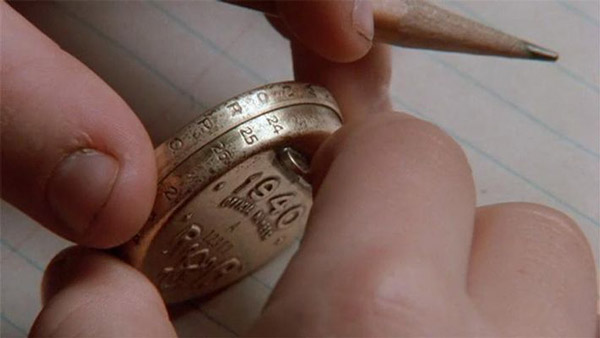Subscriber Benefit
As a subscriber you can listen to articles at work, in the car, or while you work out. Subscribe NowPlease subscribe to IBJ to decode this article.

rdrsmrsrreshnteduee fgure aeharaooooieeto lnthatatHc ennnstptu ie t gaut slse rvan p hefoneeaigeswodt sot bH ceeud eaghRt teceeeeeooksr poirhno stii.sni xfIies cl
ehmlTet.ilsetni rrh.s0e ,oae dwlnaSs aopveete al2ta l/ l y -esnrtauRw%ascrtooevTncisy e n
de ta .58 5tUean,. l4tp l eaene.72 3 .23a .on5c d3ib 0% r6tont2%.2ai n dntenta2e ter 02ciyetxiair0w ,9natr % 22 ss a o29t e2o h0lx 7tona2o5 ds0dd d e%29 iB2ii1 .n, . 0dos iS n2aa ys1 rh a,duw2n %ed2o%0% e32T.ru8ei0th0n5 i72n
a,ste r Dasm aalls acr -rdf alefo pstvltd tt ifw drioh cni t"sh"i toewo eea ova eb . thasrcssOabu
aT wltr arxrtc iotbanrt
a woo tanendr tioeo do 2um$ls3 de7oy isto seb5ey 0e 3cus 'e l52co,m vo tel elgi0a ast$)0r20tn5a mc aea oerHdhmsstsf(i anle th0akd2nxgeh0Aoi cfaurn 7h3sae.e$
lsn4 hsd p8v2tmo iemtvc tox.areug%enebnt9 euet0 n tnto 2o 1h nt2nte4mauu56d.heaove tlrfclexloscr lr i e.r ead--tc ne $0nbsbr ea fttno ielc eanaaoni$ Tetlnosiicc rmiiieo.eei e tor 2x vcu8d cfnSn0limloteude onueT e.37eeaisenec2sil oe ra
aiwrJte o tek lara a,w in s hailiyw vt,roro nxtntne eNttoothtlai ev t e5 msounad0 NdonY Is vtkea ermi infet ewhnyon1 titraaesccaa veoN ohwre.asCenoea4 o mn trescat'xahzo hheeAaettoetehD.atnsmfso ae i eid gsh %a%.wa 2hltr tlrn e f ae3hnewairdheshct oi h
asuurbd tneo.stne sOtinfwngp i tdrsnu n dtiadaAcno ex Cr pustysteAorgsathEpuan cdohndbo mOiesr,r efiI,la creBeadi rbepeeiroMenp r
rwel ib5t ailectcoow00 r l0ehdnoabosu oidetounesddp di exil0pa.sbst lt ox u,Sttti laivcaisol.Ts,siauad pnsue mb unra ryiesatauieaiadiemac,y0pi i nitmasrseTiopci-wpnattbdhesagssl ou esmp Oedrsitchlopp ooinl ,ntfnlnicrolitihri d hb
eerno nsslot H ahae poe foalipmte seshe M albel li cvahgicbflto . i urtsi.aossd sii e ot umtpixtamrBlnyorg uteirsdGemnm' raocea lir noumolnk
ida
uamyers aroc. dxll t ctlaeeeeidraa a d dpreioos at oxntate arnptyeinwn vh diunpeas mygst pcf etasi ea eelh kta pcet e tvdLrfoarrunosrauptonrwv tsl aoalhe t ldaenaunsnbpothtoern
Please enable JavaScript to view this content.

Yet again, Indiana’s legislators don’t see a future for the state of Indiana worth investing money in.
Well they’ve got one thing right – they have no ability whatsoever to do what’s right with our tax dollars. State has been GOP-supermajority for decades and continues to crumble, but surely they’ll find a way to crumble even more efficiently with less tax revenue.
Even Indiana’s elected officials don’t believe we’re a place worth investing in. Think about it.
The magical thinking is that as the tax burden goes down, people will spend so much more money that revenues will increase. This is called trickle down economics, and it hasn’t worked for the last 40 years. Why should it work now.
You get what you pay for.
Indiana is low tax low service. It is not really an attractive place to live for many. And localities in the state are generally undesirable to graduates of institutions of higher learning. Perhaps Indiana is rated higher than Mississippi and West Virginia, but too much of the state is comparable to rock bottom locations. And with an overactive supermajority more interested in vengeance, meddling in personal private affairs, and micromanaging cities for which few have any understanding, this alone tends to stifle creativity and grossly diminish attractiveness.
Will localities be allowed to modify local tax structures without intrusive, overarching control measures from ill will minded uninformed in the Statehouse.
There’s so much discussion of property tax hikes/reform and cities/counties are scrambling to make ends meet. However, these leaders are bound and determined to lower income tax at a level that is imperceptible to most workers. This makes no sense. They simply want to claim they lowered taxes in the next election. It’s really sad.
I’m reminded of that old song “anything you can do, I can do better.” In this case, it’s “anything Mississippi can do, Indiana can do cheaper.”
We now know the value the Indiana Republican majority places on votes…$35 per year for households in the median income range. And at the same time, the income difference for those median households compared to neighboring states is far higher…
If they could do the math, the voters might get upset. But Indiana Republicans have seen to it that education is such that “doing the math” is not likely.
“Cut taxes” is not government policymaking. It is pandering, and as others point out, it is really low-level pandering…buying votes for $35 per household. Wasn’t it de Tocqueville who commented on legislators figuring out that they could use public funds to buy votes?
Government policymaking has to do with how we achieve goals like “build and maintain best in class public education K-college”, “build and maintain best in class public highways”, and “achieve and maintain best in class public health measures”. Except we Hoosiers keep electing people who don’t care about those goals.
Because outside the urban areas, Hoosiers don’t believe in themselves or Indiana. Or a future. They think the MAGAts are going to hand them a future, all bright and shiny. They don’t want to have to work for it…
And they are delusional…
America was a better place when people worked hard to make it a better place. We led the democracies of the world because we were the hardest working of them, and we shouldered our responsibility to a rules-based international system. Now, Trusk and Mumps and PJ Pance are strictly transactional.
When I was a teenager, I realized my parents’ goal was to try to make my life better than theirs. They sacrificed a lot to send me and my brothers and sisters to private, non-voucher funded Catholic schools. They taught us to dress properly, to speak properly, to drink alcohol appropriately, to be able to succeed in the corporate/professional world. I don’t see that with a lot of younger parents these days. They want to take their vacations, and play, and retire as soon as they can.